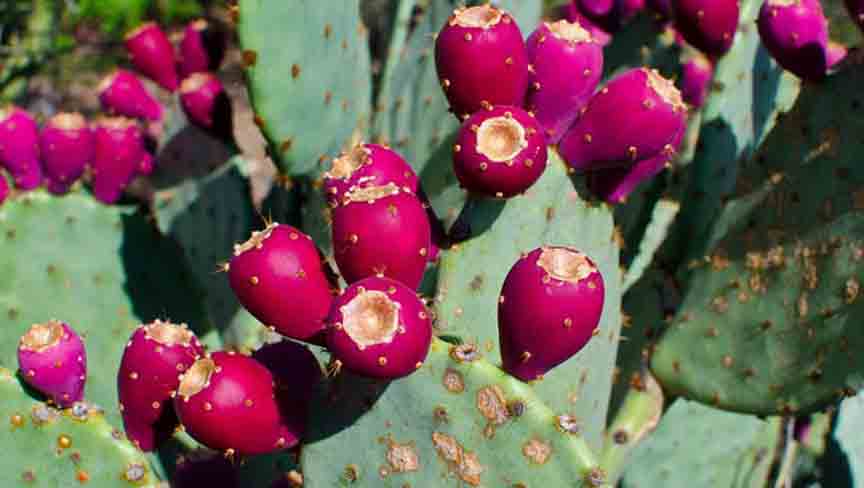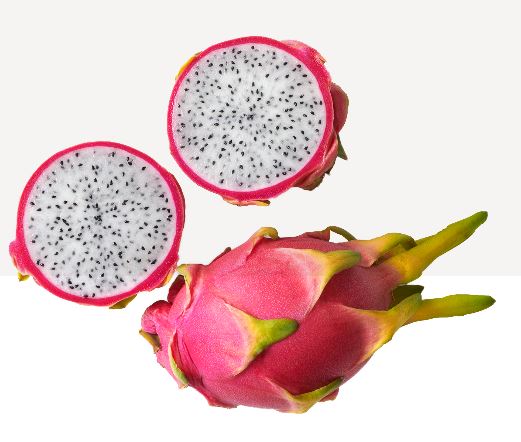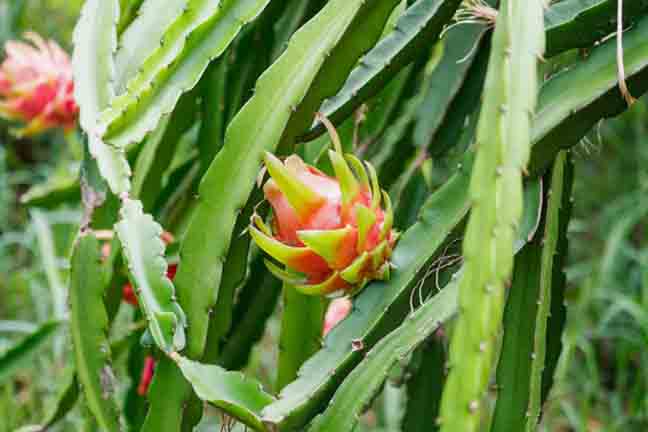Prickly Pear: OpuntiaOpuntia, commonly called prickly pear, is a genus of flowering plants in the cactus family Cactaceae.
 late summer crop In late summer in Mexico, prickly pear cactus fruits, or tunas, are everywhere. Providing a refreshing snack eaten out of hand and a popular ingredient in candies, drinks, jams, and more. The prckley pear cactus grows all over Mexico; it's also cultivated on plantations. Cactus pads, or nopales, are eaten year-round, but it's only in summer that the fruits reach maturity. Varieties number in the hundreds, with flavor profiles ranging from creamy-sweet to brisk and tart. The dark nubs on the skin contain sharp spines, but these are easily removed by slicing off the ends of the fruit, making lengthwise incisions, and peeling back the rind to reveal the luscious flesh.
Common Tunas found in market
The flavor of a ripe prickly pear cactus fruit depends on the variety but include strawberries, watermelons, honeydew melons, figs, bananas, and citrus. You can eat them raw, at room temperature or chilled, and alone or with lemon juice. They can be cooked into jams and preserves or cooked down into a syrup as a base for jelly and candy ( the "cactus candy" in some Mexican food stores. This syrup can be reduced even further into a dark red or black paste that is fermented into a potent alcoholic drink called "coloncha." The fruit pulp can be dried and ground into flour for baking into small sweet cakes, or stored for future use. Individual taste preferences will dictate which varieties to choose for eating fresh and which for cooking. In Mexico alone, there are over 100 species with edible fruits. While all the fleshy fruit kinds are edible and none are poisonous, only a few are palatable and even fewer taste really sweet. They range from juicy to dry and sweet to acid. Cantwell-de-Trejo says that the acidity and fibrousness of the fruits are called "xoconochtlis" and are used in certain traditional Mexican stews and other dishes. Fruit size, shape, and color vary from small and round like a walnut to three inches long and two inches wide like a rounded cylinder. Skin and flesh come in a rainbow of colors ( white, green, yellow, orange, red, purple, and brown. White-skinned varieties are the most popular in Mexico, while the sweetest varieties generally available in this country have dark reddish-orange or purple skins and deep red-purple flesh. The fruits ripen from early spring through late fall, depending on the variety. Those that are best for eating fresh ripen from September through November. The perfect stage of ripeness of each fruit lasts only about a week, and the maximum shelf life of a fruit is only eight or nine days. Many of the fruits sold in California are imported from Mexico to extend the market season.
Dragon fruit Dragon Fruit (White Fleshed Pitahaya) The edible part of the hylocereus cactus is probably one of the most unique and bizarre cactus fruits you will ever eat. This fruit comes from the Cactaceae family of climbing cacti. Dragon fruit, also known as pitaya or the strawberry pear, is a beautiful tropical fruit that is sweet and crunchy. The plant the fruit comes from is actually a type of cactus of the genus Hylocereus, which includes about 20 different species. Originally popular in Southeast Asia and Latin America, dragon fruit is now grown and enjoyed all over the world.  Though it may look intimidating with its pinkish red skin and light green scales, preparing this unusual fruit is easy. You can enjoy eating it in fruit salads, it can be used to create tasty drinks and desserts, and it is a wonderful, healthy snack on its own. Dragon fruit is also known as strawberry pear, pitaya, or pitahaya. Pitaya and pitahaya are actually two distinctly different varieties of dragon fruit. Pitaya comes from the Stenocereus genus and is sour, while Pitahaya comes from the Hylocereus genus and is sweet. To prepare, all you have to do is cut the fruit in half length wise and scoop out the fleshy goodness that lies within using a spoon. The flesh may be white or pink in color and contains tiny black seeds that are reminiscent of kiwi fruit. Just remember that the skin is not edible.
Dragon fruit is a good source of vitamin C and vitamin A, as well as minerals like calcium, magnesium, and phosphorus. It is also high in fiber and low in calories, making it a great diet food. Cereus Peruvianus cereus peruvianus cactus in the desert Unlike many other cacti species, the Cereus Peruvianus is a fast-growing cactus that produces a delicious fruit that looks like an apple. This is why it is commonly known as the apple cactus. As a cousin of dragon fruit, the Cereus Peruvianus has a fleshy inside that is very similar to its cousin. The fruit of Cereus Peruvianus is round with skin that turns from blue-purple to orange-red when ripe.  The skin of the fruit will split when it is fully ripened and ready to be picked. The skin is smooth and spineless. When ripe, the fruit should be easy to hand pluck from the cactus. The inner flesh can be scooped out and prepared the same ways as the dragon fruit. The flavor is very mildly tart, with hints of sweet floral goodness. It is very refreshing and delightfully juicy. |